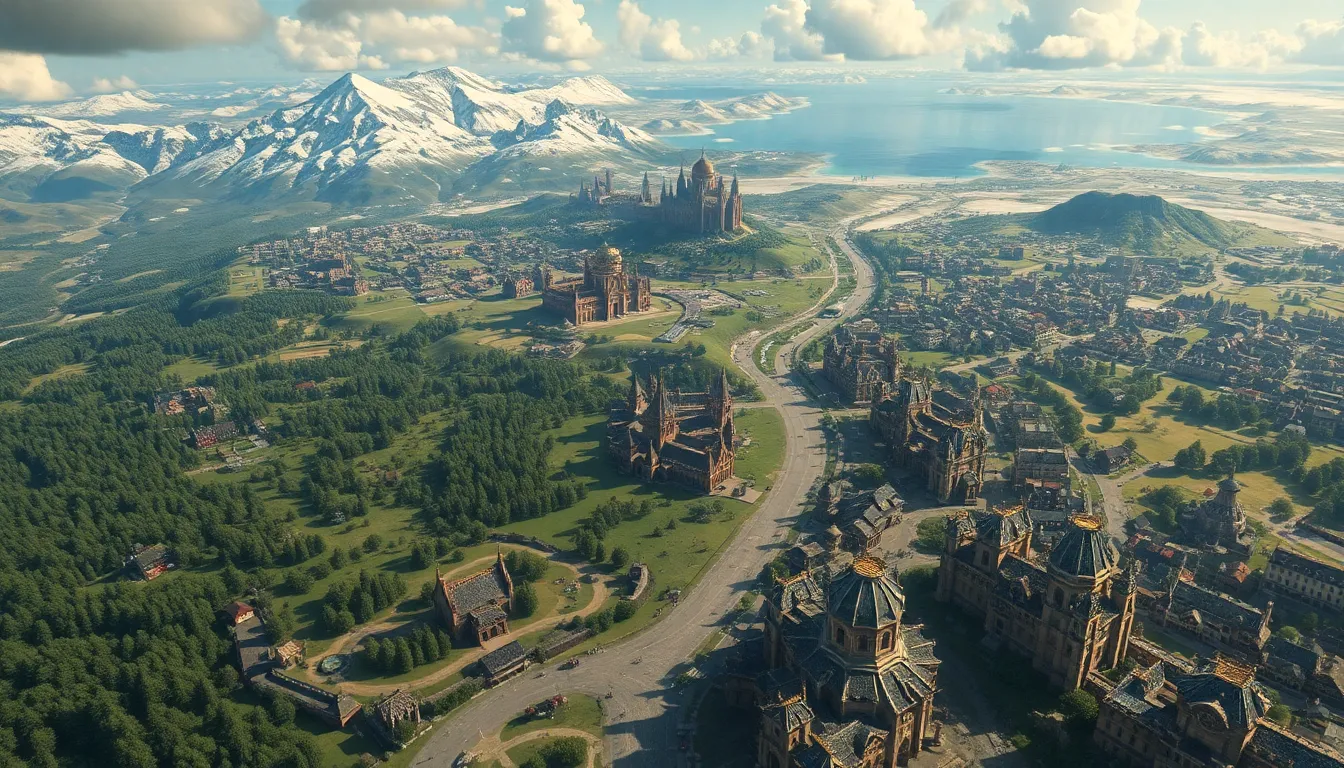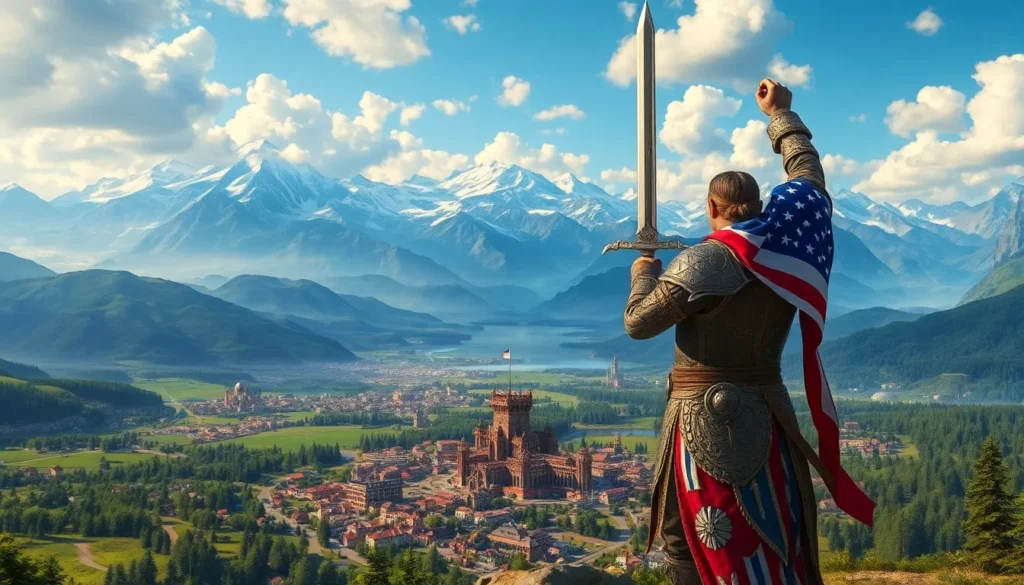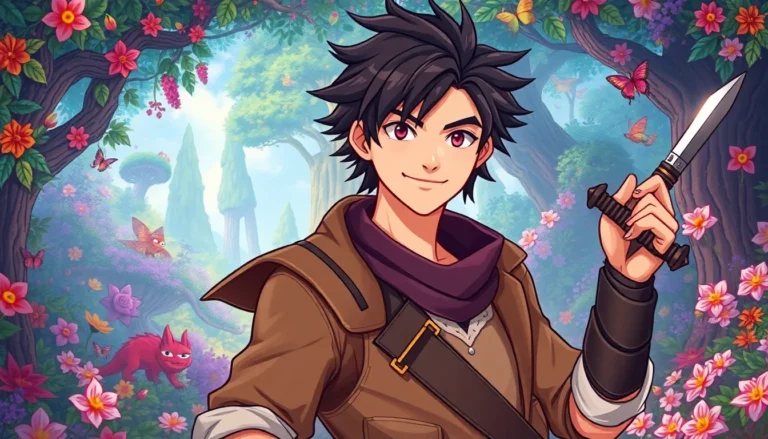In the realm of gaming, few experiences rival the vastness of role-playing games (RPGs). These immersive worlds invite players to explore sprawling landscapes, uncover hidden secrets, and embark on epic quests that can span hundreds of hours. With each new title, developers push the boundaries of creativity and scale, crafting environments that feel alive and teeming with possibilities.
From the majestic mountains of Tamriel to the sprawling cities of Eorzea, the biggest RPG worlds captivate players with their intricate designs and rich lore. These virtual realms not only serve as backdrops for adventures but also as living ecosystems where every choice matters. As gamers seek out the largest and most detailed worlds, they discover that the size of an RPG world can significantly enhance the gaming experience, offering endless opportunities for exploration and storytelling.
Table of Contents
ToggleOverview of RPG Worlds
RPG worlds serve as the foundation for immersive storytelling and exploration. These expansive environments enrich gameplay, captivating players with their complexity and depth.
Definition and Importance of RPG Worlds
RPG worlds represent interconnected environments where players undertake quests, engage with characters, and explore diverse landscapes. These settings are crucial in defining the game’s narrative, fostering player immersion, and enhancing emotional connections. By crafting intricate lore and dynamic ecosystems, developers ensure these worlds function as both a backdrop and a vital component of gameplay.
Criteria for Determining Size
Several factors determine the size of RPG worlds, including:
- Geographical Diversity: Varying terrains, such as mountains, forests, and oceans, contribute to an expansive game map.
- Population Density: The number of cities, towns, and inhabited areas affects the perceived vastness of the world.
- Explorable Locations: The inclusion of dungeons, hidden areas, and unique landmarks enhances world size.
- Quest Scope: A greater number of quests and storylines tied to different regions increases the world’s depth.
- Player Freedom: The freedom to traverse various environments and approach objectives diversely adds to the sense of a larger world.
These criteria collectively inform players’ experiences, making RPG worlds feel vast and alive.
Notable Contenders for the Biggest RPG World

Numerous RPGs claim vast landscapes brimming with lore, quests, and adventure. Below are some notable contenders for the title of the biggest RPG world.
The Elder Scrolls Series
The Elder Scrolls series features Tamriel, a continent replete with diverse regions, cultures, and lore. Spanning over 41 square kilometers in “Skyrim,” players encounter extensive locations like cities, dungeons, and wilderness areas. Each province, such as Morrowind and Cyrodiil, offers unique gameplay experiences and storylines. The series emphasizes exploration, with random events and dynamically generated quests, enhancing player immersion. Notably, its expansive narrative threads connect each game’s events, creating a cohesive universe.
World of Warcraft
World of Warcraft boasts the vast continent of Azeroth, which exceeds 60,000 square kilometers when considering all expansions. Players traverse various zones, including Kalimdor and the Eastern Kingdoms, each with distinct environments and quests. With more than 300 explorable areas, the game continuously evolves through expansions and updates, introducing new races, regions, and gameplay mechanics. The persistence of player interactions and community events further enriches the experience, making Azeroth feel alive and ever-changing.
Final Fantasy XIV
Final Fantasy XIV features the realm of Eorzea, another immense world marked by intricate storytelling and rich character development. Players explore islands, cities, and wilderness, with the total playable area reaching approximately 37,000 square kilometers. The game includes over 200 dungeons, each containing unique quests and challenges. Frequent expansions, such as “Shadowbringers” and “Endwalker,” introduce new areas and gameplay content, expanding the lore and enriching the universe further for players. The vibrant community events and seasonal activities enhance player engagement within the ever-expanding world.
Comparing the Size of RPG Worlds
RPG worlds vary significantly in size and complexity, offering different metrics for comparison. Measurable aspects and opportunities for exploration define these expansive environments, enhancing player immersion.
Measurable Aspects of Size
Size can be evaluated through several key factors. Geographic area quantifies the land players can explore, while the number of towns, dungeons, and significant landmarks influences the world’s richness.
- Geographical Diversity: Varied terrains, including mountains, forests, and deserts, contribute to the overall area.
- Population Density: The number of NPCs (non-player characters) populating cities and villages creates a lively atmosphere.
- Explorable Locations: The total number of distinct areas, such as quests or resource zones, enriches the player’s experience.
- Scope of Quests: Diverse quest types and story arcs reflect a game’s depth and extent.
- Player Freedom: Opportunities for players to navigate freely and impact the world heighten the sense of scale.
Exploration and Immersion
Exploration in RPGs relies heavily on world size and design. Players engage with expansive narratives and undertake adventurous journeys enhancing immersion.
- Vast Landscapes: Open fields, intricate towns, and hidden locations invite players to discover secrets.
- Lore and Backstories: Richly developed histories of locations and characters encourage deeper exploration.
- Dynamic Environments: Weather changes and day-night cycles add layers of realism, enhancing engagement.
- Interactive Elements: Quests, collectibles, and environmental puzzles provide players with reasons to explore every corner.
- Community Involvement: Multiplayer elements and social interactions further enrich the exploration experience, creating a shared adventure.
These aspects collectively shape the player’s interaction with RPG worlds, showcasing just how immersive and extensive these virtual realms can be.
Player Experiences in Large RPG Worlds
Large RPG worlds significantly enhance gameplay by immersing players in detailed environments filled with lore, challenges, and opportunities for discovery. Through exploration and interaction, players engage in unique experiences that define their gaming journey.
Impact on Gameplay
Gameplay in expansive RPG worlds benefits from diverse environments that encourage exploration and discovery. Players encounter intricate storylines, hidden treasures, and complex characters that enhance immersion. The variety of landscapes, such as forests, mountains, and cities, creates distinct gameplay experiences that demand different strategies and approaches.
Game mechanics, such as crafting, combat, and questing, rely on world size to thrive. For example, players in “The Elder Scrolls” series navigate vast landscapes, undertaking quests that vary in difficulty and complexity based on location. Similarly, “World of Warcraft” features multiple zones, each offering unique challenges and rewards, promoting extensive gameplay.
Engagement rises as players explore vast terrains and uncover secrets. The emotional connection to the environment deepens through the intertwining of narrative and gameplay. Challenges in navigating these large worlds foster problem-solving skills and enhance retention of game lore.
Community and Social Interaction
In large RPG worlds, community and social interaction play a crucial role in the overall experience. Multiplayer options allow players to collaborate on quests, share resources, and form guilds, fostering a sense of belonging. Games like “Final Fantasy XIV” encourage group play for challenging raids or shared adventures.
Players benefit from forming friendships and alliances. Such interactions often transcend the game itself, leading to real-life connections. Community events and forums enhance engagement, allowing players to discuss strategies, lore, and world events.
Social features, including trading and cooperative gameplay, encourage collaboration. As players work together, they create shared memories, enriching their in-game experience. The dynamism of large RPG worlds is bolstered by the vibrant communities that thrive within them, demonstrating the importance of social interaction in enhancing the player experience.
The vastness of RPG worlds captivates players and invites them to embark on unforgettable adventures. These expansive environments not only provide a backdrop for epic quests but also foster rich storytelling and community engagement. As developers continue to push the boundaries of design and innovation, players can expect even more immersive experiences in the future. The interplay of exploration, lore, and social interaction makes these worlds feel alive and dynamic. Ultimately, the biggest RPG worlds are more than just large maps; they are intricate ecosystems that enhance gameplay and forge lasting connections among players.








